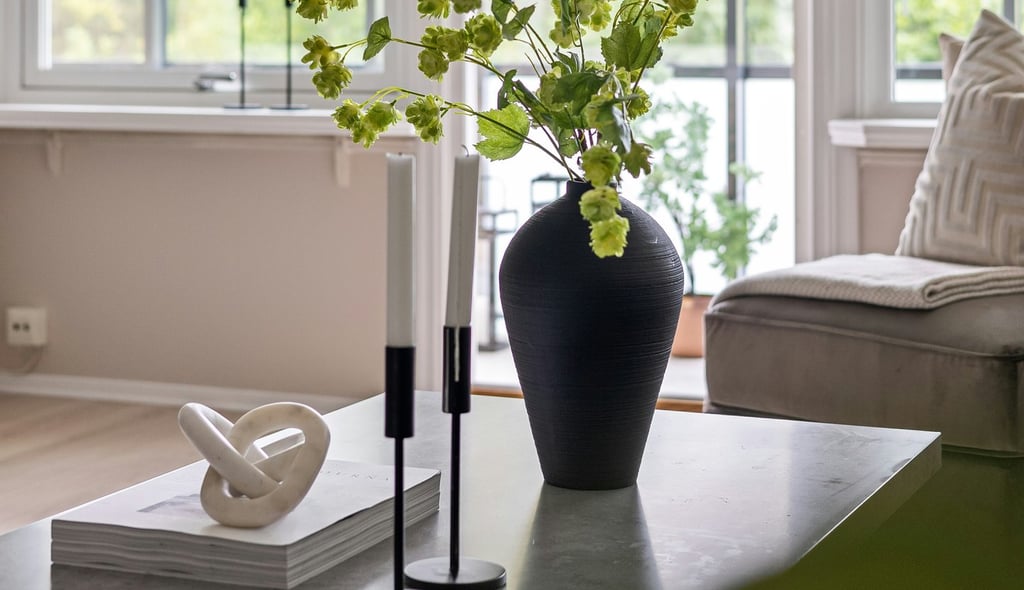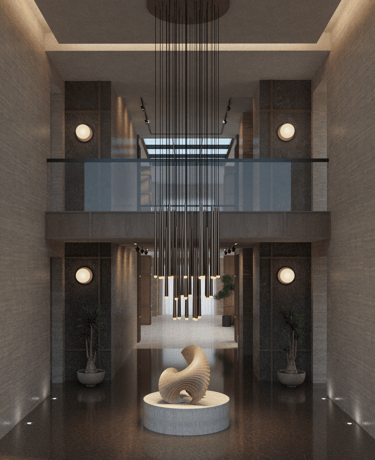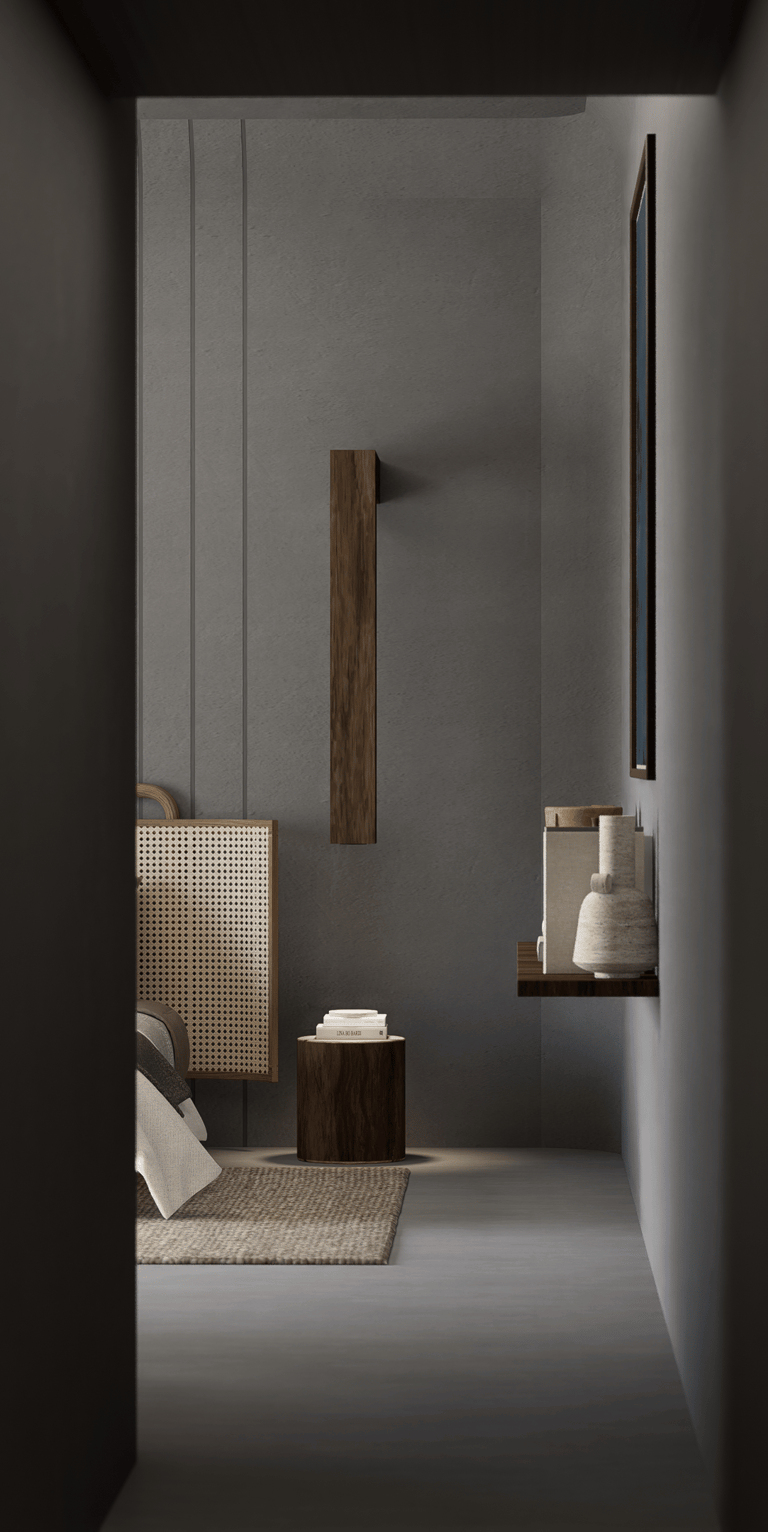Dubai Villas Reimagined: The Courtyard and Terrace as Living Intelligence


Introduction
Luxury in Dubai villas is no longer confined to marble floors or statement chandeliers. It is measured in how architecture choreographs climate, ritual, and intimacy. Courtyards and terraces, once peripheral, now define the villa’s intelligence. They are private lungs and public stages, softening Dubai’s extremes while enriching family life. Research confirms what traditional design has always known: geometry, orientation, materials, and planting can craft resilient microclimates that support comfort, privacy, and culture year-round.
The Courtyard: The Villa’s Intimate Core
Geometry & Orientation
The courtyard is a spatial engine. Its proportions dictate temperature, shade, and atmosphere. Tall, narrow courts create sanctuary through extended shade; broader courts open to winter sun and evening gatherings. Orientation sharpens performance: east–west layouts reduce harsh exposures, while north–south courts balance daylight and privacy. A villa may hold a single, central void—or a sequence of pocket gardens, each calibrated for different times of day and rhythms of life.
Airflow & Thermal Strategy
A well-designed courtyard breathes. Through the stack effect, warm air escapes from high operable vents while cooler air is drawn across shaded floors or water channels. When linked to stairs or atria, the courtyard becomes a passive chimney, reducing reliance on mechanical cooling. Subtle water features—narrow rills, shallow reflecting pools—add evaporative cooling and soften sound, amplifying sensory pleasure without excessive upkeep.
Light, Shadow, and Privacy
Light here is sculptural. Reinterpreted mashrabiya, timber slats, or perforated metals filter glare into patterned shade, enhancing privacy while protecting interiors and artworks. By day, indirect daylight reduces artificial lighting; by night, restraint prevails: uplights grazing limestone, lanterns with paper-soft glow, water shimmering just enough to animate without intruding.
Sensory & Cultural Layering
The courtyard accommodates ritual. Majlis adjacency, private family courts, and meditation nooks coexist seamlessly, offering multigenerational use without conflict. Planting deepens the sensory palette—jasmine for fragrance, citrus for seasonal cues, ghaf for rooted cultural identity. Sound is tuned: street noise hushed, water and voices amplified. The result is not only microclimate but memory, a lived stage for daily intimacy.
Screens, whether mashrabiya-inspired, timber slats, or perforated metals, modulate light and privacy simultaneously. By diffusing daylight and creating patterned shade, these elements enhance the longevity of textiles and artwork indoors while reducing the need for artificial lighting. At night, subtle uplighting and paper-soft lanterns maintain intimacy, letting the courtyard transition seamlessly from daylit retreat to nocturnal sanctuary.
The Terrace & Outdoor Living: Extending Interior Intelligence
Terraces are the logical extension of the courtyard, offering daily usability rather than spectacle. Shade is layered: fixed overhangs block high summer sun, adjustable louvers and retractable pergolas create flexible zones, while airflow is guided through passageways and ceiling fans to maintain laminar comfort. Surfaces underfoot—light-toned stone or porcelain with low solar absorption—protect bare feet, while careful drainage ensures flush thresholds and slip resistance.
Shade Hierarchy & Microclimates
The terrace transforms exposure into opportunity. Deep fixed overhangs block high summer sun, while retractable pergolas, louvers, and awnings layer flexibility. Each terrace should offer at least two distinct microclimates: shaded retreat at noon, luminous edge for dawn or dusk.
Airflow & Comfort
Passive design channels breezes, while ceiling or column fans provide architectural assistance. Air is kept laminar and comfortable—never chaotic. Screens and planting act as wind baffles, preserving porosity and view while ensuring comfort.
Material Intelligence
Surfaces underfoot dictate usability. Light-toned stone or porcelain resists solar absorption, while slip resistance ensures safety near water. Marine-grade hardware and UV-resistant fabrics withstand Dubai’s coastal air, preserving refinement over time.
Water & Planting
Water is a thermal ally and a cultural anchor. Reflecting pools, rills, or proportioned basins temper the air while enriching acoustics. Planting is curated for resilience and sensuality: aromatic herbs on sunlit edges, jasmine pathways, frangipani silhouettes. Integration is key—irrigation, drainage, and root depth must be designed, not improvised.
Lighting & Threshold Choreography
Lighting is layered for subtlety: foliage grazing, step markers, under-bench glows. Darkness is preserved as much as light is revealed. Thresholds are seamless—flush levels, pocketed doors, invisible thermal breaks—so that interior and terrace merge without perceptible transition.
Ritualized Outdoor Life
The terrace is not stagecraft; it is daily life. Dining clusters, lounge ensembles, tea or bar stations—all are proportioned and positioned for spontaneous, repeated use. With comfort assured, life naturally migrates outward, turning the terrace into an instinct, not an occasion.
Courtyard and Terrace: A Unified Environmental System
The courtyard and terrace form a continuous environmental system—a choreography of cooling, airflow, light modulation, and sensory resonance. They merge private ritual with outward sociability, turning climate management into a cultural experience.
Sustainability here is felt, not ideological: reduced energy loads, resilient materials, native planting, and passive comfort strategies heighten well-being. In a Dubai villa, the courtyard and terrace are not ornaments—they are the intelligence of the home, binding architecture, family, and climate into a seamless whole.
Research underscores daylight management: optimized glazing and overhangs reduce solar heat gain while preserving luminous interiors, allowing terraces and rooms to merge visually and functionally. Evaporative water features, thermal breaks, and shaded seating edges enable natural temperature moderation while supporting human comfort and sensory delight.
Furniture, planting, and ritual are choreographed as meticulously as structure. Dining tables, lounge clusters, and tea stations are positioned for daily use, reinforcing movement across the threshold without friction. Light, fragrance, and texture are deliberate: a sunlit jasmine path, a misted rill underfoot, a glow on limestone walls—each moment curated to blend performance with pleasure.


Closing Thought
Luxury is no longer measured in objects but in outcomes. The greatest wealth is a home that returns energy, focus, and calm every day. By orchestrating air, light, sound, flow, and materiality with research-driven precision, your residence becomes more than a dwelling. It becomes a sanctuary designed for a life fully lived—balanced, beautiful, and deeply restorative.


